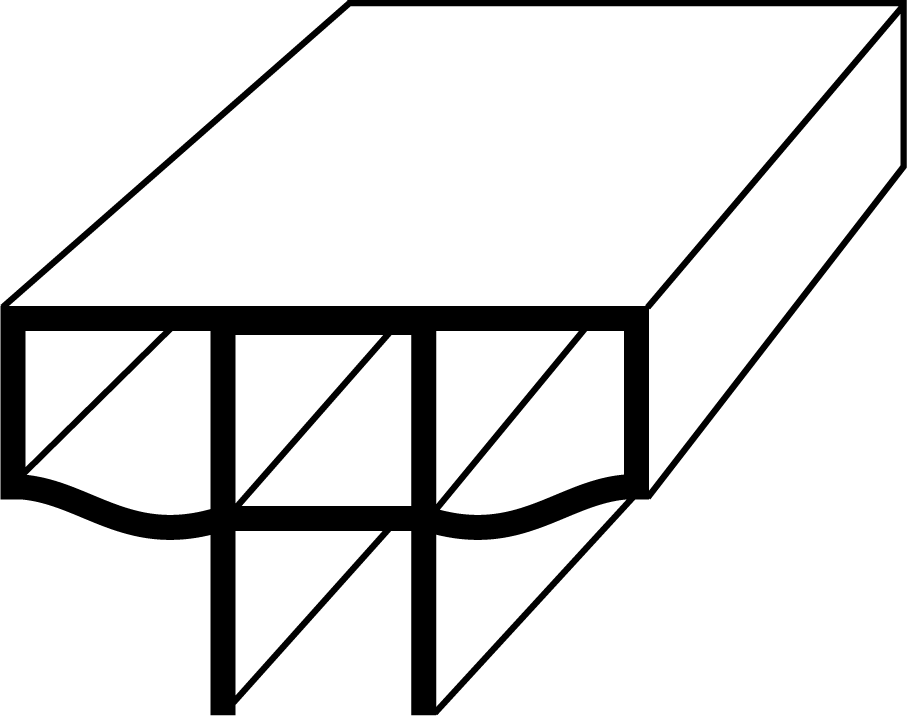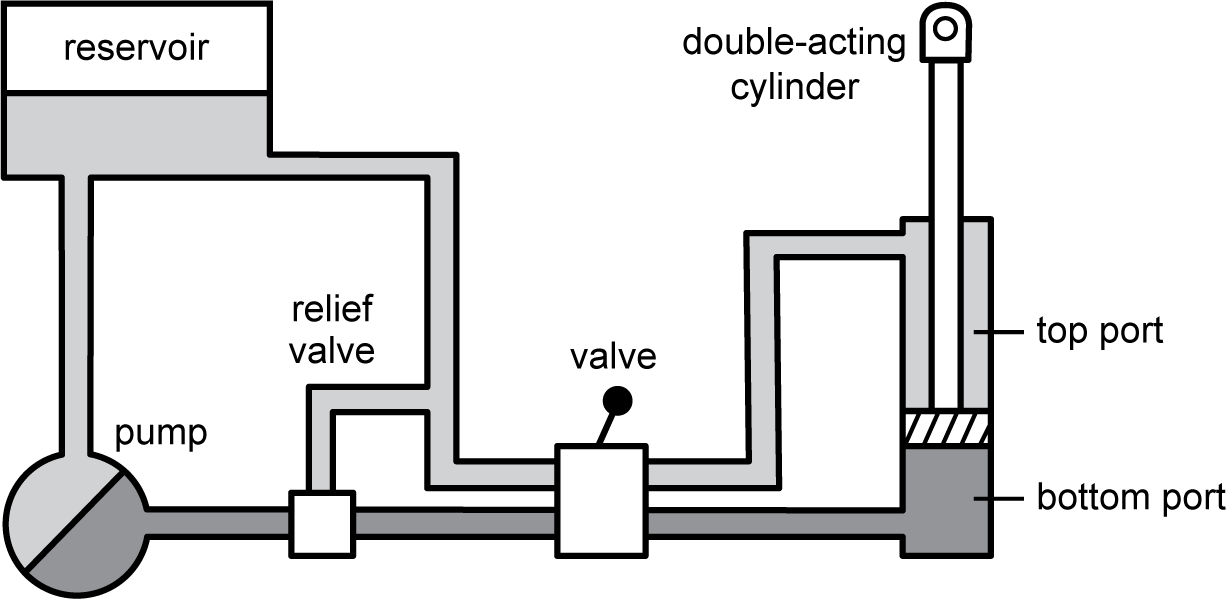Test Information Guide
Field 70: Technology/Engineering
Sample Multiple-Choice Questions
The following material will be available to you during the test.
Constants and Formulas ![]()
Subarea 1–Engineering Design
Objective 0001
Apply knowledge of connections between engineering, technology, mathematics, and natural sciences.
1. Use the formula below to answer the question that follows.
P = P equals V squared divided by R.
The formula relates power (P), in kilowatts, to voltage (V) and resistance (R). Students are restoring an antique vehicle that has a 6.0-volt electrical system. The vehicle needs a new starter motor, but the only replacement the students can find is one that is designed for a 12.0-volt electrical system. If the replacement starter motor uses 4.0 kilowatts (kW) at 12.0 volts, approximately how many kilowatts will it use at 6.0 volts?
- 1.0 kW
- 2.0 kW
- 8.0 kW
- 16 kW
- Answer
- Correct Response: A.
Objective 0003
Apply knowledge of technology and engineering in social contexts.
2. Students are evaluating the design of a new mobile phone model. They have come up with a four-point rating scale and a series of statements. A representative sample of the statements is shown below.
I like the way the phone looks.
Strongly disagree Neither agree nor disagree Agree Strongly agree
I like the way the phone feels in my hand.
Strongly disagree Neither agree nor disagree Agree Strongly agree
The phone makes pleasant sounds.
Strongly disagree Neither agree nor disagree Agree Strongly agree
According to the statements in the sample, students are rating the design based primarily on:
- aesthetics.
- versatility.
- functionality.
- innovation.
- Answer
- Correct Response: A.
Subarea 2–Materials, Tools, and Manufacturing
Objective 0004
Apply knowledge of the selection and safe use of appropriate materials, tools, equipment, and machines in technology and engineering.
3. A student on a school robotics team needs to measure the diameter of a motor shaft. Which of the following tools would be best suited for this task?
- steel ruler
- protractor
- tape measure
- caliper
- Answer
- Correct Response: D.
Objective 0005
Apply knowledge of manufacturing processes used to create products that meet stated requirements.
4. Use the diagram below to answer the question that follows.

The diagram shows the end view of a cross-section through a railing. The structure is mostly hollow and roughly tee-shaped. The top part consists of three hollow squares side by side divided by the same material that forms the top and sides of the railing. The bottom surface of the two outer squares is slightly curved. The stem of the tee shape is formed by extensions of the vertical dividers on either side of the top middle square. The bottom of the hollow tee stem is open, with no horizontal connecting material.
A company manufactures railings for decks and porches made from aluminum. The railings are sold by the linear measure. The diagram shows an end-view cross section of one of the styles of railing that the company offers. Which of the following forming processes is most likely used to manufacture this product?
- extrusion
- milling
- deposition
- forging
- Answer
- Correct Response: A.
Subarea 3–Technological Systems
Objective 0006
Apply knowledge of processes used to communicate data and information.
5. Use the diagram below to answer the question that follows.

The diagram shows two axes with no scale. The vertical axis is labeled voltage. The horizontal axis is labeled time and extends to the right from the middle of the vertical axis. Along the horizontal time axis a continuous line starts at the origin, rises to a peak above the horizontal axis, then drops to a trough an equal distance below the axis, and rises back to a peak. This pattern continues from left to right. All of the peaks and troughs are equidistant above and below the horzontal axis. Moving from left to right, the distance between the peaks gradually gets smaller and then the distance between peaks becomes greater.
Which of the following types of encoding is represented by the diagram?
- single pulse width modulation
- amplitude modulation
- digital phase modulation
- frequency modulation
- Answer
- Correct Response: D.
Objective 0008
Analyze the effects of forces in construction technology.
6. Use the diagram below to answer the question that follows.

The diagram shows a side view of a beam supported at the same height on either end. Above the beam there are downward pointing arrows of equal length. The beam is curved downward with its lowest point in the center of the beam. The bottom center of the beam is labeled bottom surface.
The diagram shows a beam bending under a uniform load. Which of the following types of force is the bottom surface of the beam experiencing due to the bending?
- compression
- tension
- torsion
- shear
- Answer
- Correct Response: B.
Objective 0009
Apply knowledge of the principles and characteristics of transportation technology.
7. A car is driving down a straight, level road at a constant speed of 65 miles per hour. Which of the following statements must be true about forces acting on the car?
- The force of propulsion is zero.
- The force of friction is zero.
- The resistive frictional forces are equal and opposite to the force of propulsion.
- The resistive frictional forces are equal and opposite to the weight of the car.
- Answer
- Correct Response: C.
Subarea 4–Energy and Power Technologies
Objective 0010
Apply knowledge of fluid systems and their role in technological systems.
8. Use the diagram below to answer the question that follows.

The line diagram of a hydraulic system shows a reservoir in the upper left with two outlets. The lower half of the reservoir contains a light gray fill. One outlet, filled with light gray, extends vertically downward to a pump at the lower left. A diagonal line divides the pump. The side from the reservior is light gray, while the other half contains dark gray fill. There is an outlet from the right side of the pump that runs horizontally and contains the dark gray fill. A short distance to the right of the pump is a structure labeled relief valve. Further along to the right is a structure labeled valve. The pipe with the dark gray fill enters the bottom port of a double acting cylinder. A narrow straight mechanism extends upward beyond the top of the cylinder. At the bottom of the mechanism is a horizontal divider in the cylinder. The top port of the cylinder has the light gray fill. There is an outlet on the left side of the cylinder's top port. The light gray fill continues into the outlet. The outlet pipe extends to the left and passes through the same valve structure as the pipe with the dark gray fluid. A short distance to the left of the valve, the pipe has a branch to the relief valve. The pipe with the light gray fill continues back up to the reservoir.
The diagram shows a hydraulic system that uses a double-acting cylinder. The cylinder has two ports. When fluid is pumped into the bottom port, the piston moves upward. When fluid is pumped into the top port, the piston moves downward. Which of the following actions is the primary function of the double-acting cylinder in the system?
- creating pressure within the system
- controlling the direction of fluid flow
- performing work on an external load
- drawing fluid from the reservoir
- Answer
- Correct Response: C.
Objective 0012
Apply knowledge of electrical principles and components and their roles in technological systems.
9. A technology and engineering student has built a circuit using a 9.0-volt battery, a resistor, and a red L E D. The L E D is in series with the resistor. The student measures a voltage of 2.0 volts across the L E D. What is the voltage across the resistor?
- 4.5 volts
- 7.0 volts
- 11.0 volts
- 18.0 volts
- Answer
- Correct Response: B.
Objective 0013
Apply knowledge of basic principles of energy, work, and power and their relationship to mechanical systems.
10. Use the diagram below to answer the question that follows.

The diagram shows a side view of a device with two parallel horizontal beams separated vertically by some space. On the left end, the two beams are connected by a rectangular piece that keeps them separated. The piece is connected to the top beam at a single point labeled pivot point. To the right of the pivot point, there is an object labeled concrete sample between the two beams. There is an object labeled bathroom scale on the right end of the top beam. There is a downward facing arrow above the middle of the scale. Dimensions above the device indicate zero point five meter from the pivot point to the center of the concrete sample and two point zero meters from the middle of the concrete sample to the middle of the scale.
Students have built the device shown to test the effects of different amounts of aggregate, such as sand or crushed stone, in a concrete sample. A concrete sample is placed as shown, and students push down on the bathroom scale to determine the force needed to crush the sample. If the students push on the scale with a force of 200 pounds, what force is applied to the concrete sample?
- 400 pounds
- 500 pounds
- 800 pounds
- 1,000 pounds
- Answer
- Correct Response: D.
